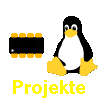
Project
Hardware
Manual

MXE11: run UNIX on a microcontroller
V1.71 (c) 2017-2018 Joerg Wolfram
V1.71 (c) 2017-2018 Joerg Wolfram
1 Start and Stop
Overall, the image file contains 3 disk images. All images fit in 8 megabytes and thus on the AT45DB642 Dataflash. The first disk image (/dev/rk0) is always mounted to / (root directory), the other 2 images can only ever be mounted, preferably to /mnt. The mount binary is located in the /etc folder, so the call must be:/etc/mount /dev/rk1 /mnt |
/etc/umount /dev/rk1 |
After that, the Sys LED is activated and tries to boot from the medium. while the first sector is read into the RAM and jumped to the beginning of the read memory areas. If there is no valid boot sector, in most cases the emulator stopps with a User Halt and the status LED starts flashing.
After successfull start You will get a login prompt. Login can be done as root or as user mxe, both with no password.
To shut down the PDP11 must be shut down. The command resp. the program of the same name halt, which first executes a sync() and then the write cache in the controller to the storage medium back. Finally, the status LED goes off and the power supply can be switched off.
Attention: Don NEVER disconnect power or reset the controller befor the system is shut down. Otherwise the file system probably will be corrupted and connot be repaired.
#halt Cleanup cache ...... MXE11: SYSTEM HALTED |
2 Modified and additional programs
2.1 Die Shell (sh)
the hhell (sh) currently contains 2 special features:- Apart from the usual Unix V6 chdir command, cd can be used
- With the experimental prompt command (toggling) the current path will be showed at the command prompt
2.2 Shut down the system (halt)
This program comes from me and runs only on the MXE11. It is used to shut down the system. First a sync() is executed, then the magic value 0x1234 is written to the memory cell 0xFABC. This causes the emulator to clear the cache and stop the system. After a stop the status LED will be switched off.2.3 MIPS Benchmark (mips)
This benchmark often runs the machine command INC R4 one after the other. As parameter is indicated how many millions of times the command should be executed. If you enter here, for example 100 on, can be easily removed from the elapsed time to determine the MIPS value. For more accurate results, the command should be using time to be started.2.4 Towers from Hanoi Benchmark (hanoi)
This benchmark rearranges a 10-pack stack of slices. The parameter indicates the number of sorts, a good value is 1000. For exact results, the command should be using time The number of loops per second is then1000 / measured time.
created with latex2web.pl v0.63 © 2006-2018 Joerg Wolfram